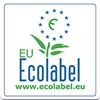Environmentally Acceptable (EAL) & Biodegradable Lubricants
Environmentally responsible companies looking to fulfill regulatory requirements while promoting environmental stewardship, sustainability and “greener” applications are partnering with FUCHS to address the rising demand for safer, high-performance lubricants. At FUCHS we offer sustainable lubricants backed by relevant technical data. Environmentally Acceptable Lubricants (EALs) are a class of sustainable products widely recognized throughout the lubrication industry.
FUCHS’ EALs and Biodegradable Lubricants have been developed to meet regulatory requirements for applications in sensitive ecological environments such as waterways, forests, or other areas where water or ground contamination is a concern.
What are Environmentally Acceptable Lubricants?
An EAL might be a vegetable or plant-based, synthetic ester, polyalkylene glycol (PAG), or polyalphaolefin (PAO) lubricant. An EAL must meet biodegradability, aquatic toxicity, and bioaccumulation requirements as defined under the 2013 Vessel General Permit by the US Environmental Protection Agency.
The term “biodegradability” refers to a materials ability to broken down by microorganisms. Biodegradability is measured per (OECD) 301 B and (ASTM) D 5864. Depending on the results of this test, a lubricant could be classified as having inherent biodegradability or ready biodegradability.
Inherent biodegradability: At least 20% of the lubricant has converted to CO2 within 28 days.
Ready biodegradability: At least 60% of the lubricant has converted to CO2 within 28 days.
A lubricant’s toxicity to aquatic organisms is measured per OECD 201– 4 and 209-212. These 72-hour tests are conducted with freshwater algae or cyanobacteria after which algae and/or bacteria growth, cell density, and shape are measured. A lubricant with low toxicity to aquatic organisms will have a High Lethal Concentration 50 Value, or the concentration at which the lubricant is lethal to 50% of organisms.
Bioaccumulation measures how chemicals build up in the tissue of organisms over time. The greater the exposure and life of the organism, the greater the bioaccumulation will be. For these reasons, lubricants should have a low tendency for bioaccumulation in applications that may pose risk to ecological environments. Bioaccumulation is measured per BOECD 117 & 107; which estimates the octanol-water partition coefficient (log Pow) of a substance, which measures a substance’s solubility in water and fat.
Which EAL is Right for You?
Every lubricant change should be preceded by expert consultation on the application in question. Only then the best lubricant system can be selected. Experienced FUCHS sales and technical personnel will be glad to advise on products and process optimization for the application in question.
Download our Brochure
Understanding Environmentally Acceptable Lubricants: Insights from FUCHS Experts
Explore our EAL Portfolio

| FUCHS Specialty Lubricants | General Characteristics and Environmentally Relevant Information | Applications |
PLANTOSYN 32 HVI PLANTOSYN 46 HVI PLANTOSYN 68 HVI |
|
|
| FUCHS Specialty Lubricants | General Characteristics and Environmentally Relevant Information | Applications |
PLANTOHYD N 32 NA* PLANTOHYD N 40 NA* |
|
|

| FUCHS Specialty Lubricants | General Characteristics and Environmentally Relevant Information | Applications |
PLANTOGEAR 68 S* PLANTOGEAR 100 S PLANTOGEAR 150 S PLANTOGEAR 220 S PLANTOGEAR 320 S PLANTOGEAR 460 S PLANTOGEAR 680 S |
|
|
| FUCHS Specialty Lubricants | General Characteristics and Environmentally Relevant Information | Applications |
| CEPLATTYN ECO 300 |
|
|

| FUCHS Specialty Lubricants | General Characteristics and Environmentally Relevant Information | Applications |
| CEPLATTYN R-VGP |
|
|

| FUCHS Specialty Lubricants | General Characteristics and Environmentally Relevant Information | Applications |
PLANTOGEL ECO 2 S PLANTOGEL ECO 2 N |
|
|
| FUCHS Specialty Lubricants | General Characteristics and Environmentally Relevant Information | Applications |
| LOCOLUB ECO |
| Railroad vehicles:
Machinery and equipment, e.g., on crane systems, mobile platforms, etc.:
|
| FUCHS Specialty Lubricants | General Characteristics and Environmentally Relevant Information | Applications |
| STABYL LG 2 BIO |
| A wide range of maritime applications:
|

